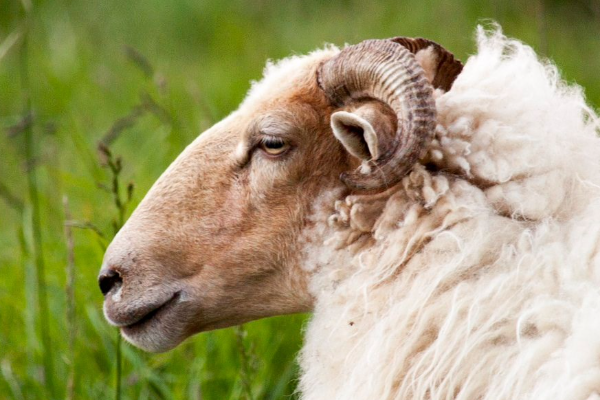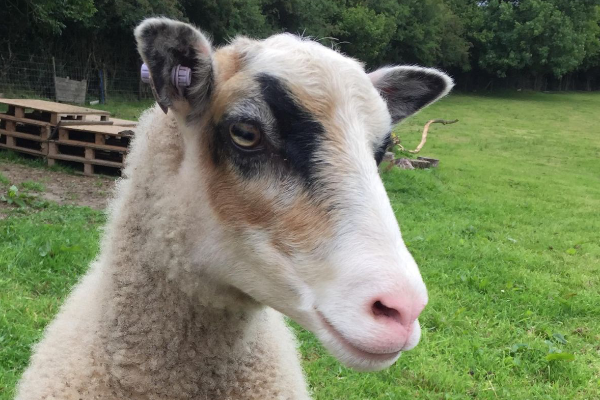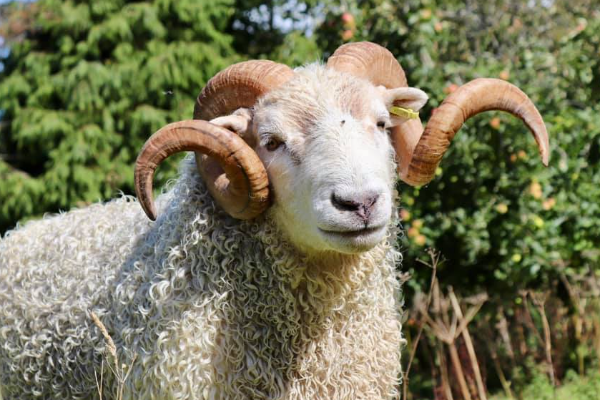Derbyshire Gritstone Sheep
What is the history of Derbyshire Gritstone Sheep?
The Derbyshire Gritstone sheep originated on the hills of the Dale of Goyt (now better known as the Goyt Valley) on the edge of the Peak District around the year 1770 and was known in its early years as the Dale O’Goyt sheep.The Derbyshire Gritstone sheep which has been evolved from the Dale O’Goyt sheep is consequently one of the oldest of British Hill breeds.
By 1850 the farmers in the locality were establishing uniformity in the breed, aiming at a hardy, disease resistant animals that could withstand the harsh winters on poor ground, produce a lively lamb, which grew well to produce a good carcass and a saleable wool crop.
The Derbyshire Gritstone Sheep Breeders Society was established in 1906.
What are the characteristics of Derbyshire Gritstone Sheep?
- The breed is white with both sexes without horns, it is used with success to sire polled lambs on other breeds of horned hill sheep.
- It has a clean-cut face and legs with black and white markings.
- Good quality weatherproof fleece.
- The head is clear of wool.
- The breed is mainly hefted, with housing for approximately two months of the year.
- They are good mothers, giving lambs with relatively rapid growth rate and good survival traits.
- The Gritstone is a quick grower, and one attribute the breed can claim is its ability the fact its lambs develop quickly and mature early to a good carcass length, and on the hill have been recorded ready for the market from 68 to 104 days (10 to 15 weeks) with liveweights to 40.35 kg and carcass weights to 21.34 kg.
- The ewes cross with both other hill breeds and continental breed giving improved lamb production.
- The breed is used for both meat and wool.
- While most hill breed fleeces are used for the production of carpets the finer fleeces of the Derbyshire Gritstone can be used for hosiery, Worsted yarns and knitwear.
What is the weight of mature Derbyshire Gritstone Sheep?

Written by
H Cetin KATIRCI
Online ShepherdBreedsMore
IllnessesMore
Forage cropsMore
![]() Патологическая физиология голодания Arina TARAN
Патологическая физиология голодания Arina TARAN![]() Дефицит фосфора (гипофосфатемия) Hipofosfatemi Arina TARAN
Дефицит фосфора (гипофосфатемия) Hipofosfatemi Arina TARAN![]() Какие бывают кормораздатчики для ферм КРС? Irina Makarova
Какие бывают кормораздатчики для ферм КРС? Irina Makarova![]() Кормушки для овец Diana Myakisheva
Кормушки для овец Diana Myakisheva![]() Питание домашних коз: что едят, виды корма и правила кормления Alina Arslantürk
Питание домашних коз: что едят, виды корма и правила кормления Alina Arslantürk![]() Важность минералов питании сельскохозяйственных животных Irina Makarova
Важность минералов питании сельскохозяйственных животных Irina Makarova
Use of the information/advice in this guide is at your own risk. The Farmow and its employees do not warrant or make any representation regarding the use, or results of the use, of the information contained herein as regards to its correctness, accuracy, reliability, currency or otherwise. The entire risk of the implementation of the information/ advice which has been provided to you is assumed by you. All liability or responsibility to any person using the information/advice is expressly disclaimed by the Farmow and its employees.




















